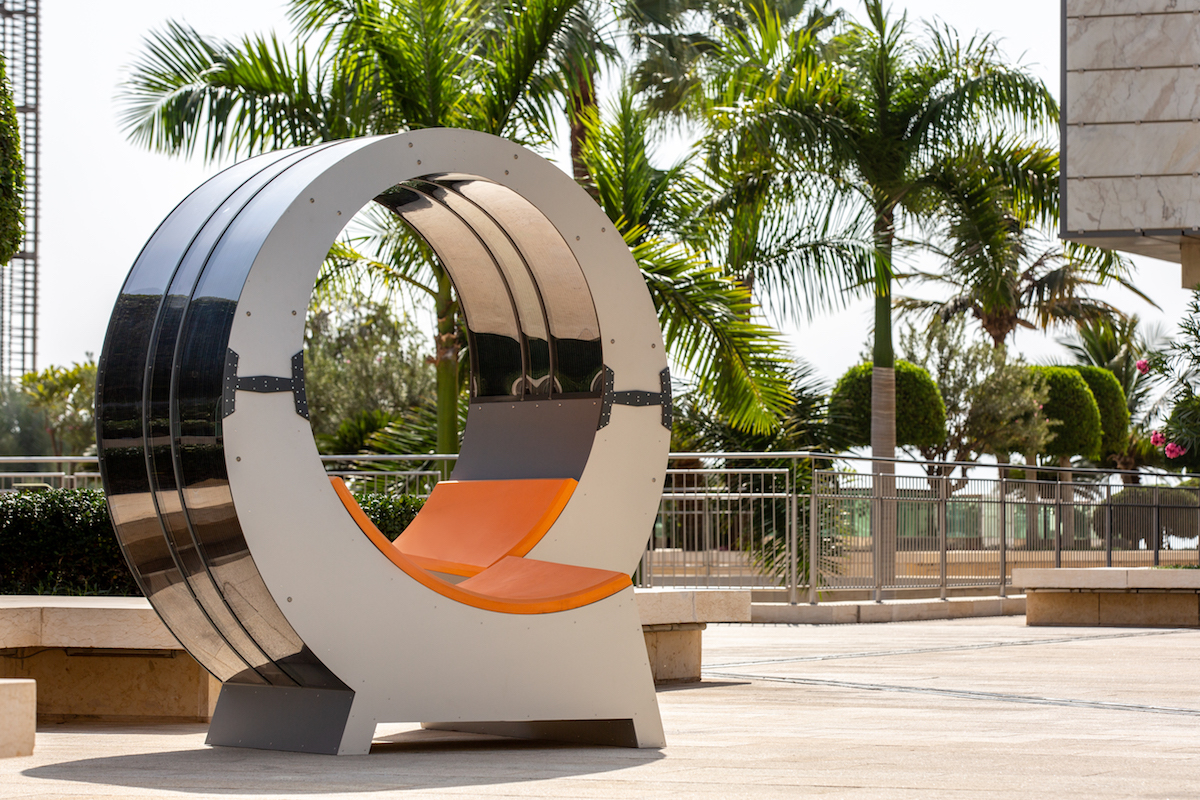KAUST and ARMOR collaborate on next gen solar tech

Sporting a futuristic design the new smart seat enables an occupant to stretch out comfortably and charge a device thanks to solar energy.
King Abdullah University of Science and Technology (KAUST) in collaboration with ARMOR, a global technology company and pioneer of solar solutions has created a new style of outdoor seating, incorporating flexible, lightweight and semi-transparent solar technologies.
Installation of the new solar street furniture on KAUST campus in Saudi Arabia has been completed. This latest generation of connected, modular urban furniture provides an autonomous source of renewable solar energy. The project features the application of KAUST's pioneering research in the area of photovoltaics while enabling ARMOR to reinforce its growing presence in the Middle East and North Africa (MENA) region.
"KAUST Solar Center is committed to demonstrating the utility and translational impact of the technology we develop. This collaboration with ARMOR, facilitated through the KAUST Office of Sponsored Research, gave us the opportunity to evaluate the potential of our new materials and fabrication processes in an industrially viable context," says Professor of Chemical Science, Iain McCulloch, Director of KSC.
Sporting a futuristic design the new smart seat enables an occupant to stretch out comfortably and charge a device thanks to solar energy. Once this solar energy is collected, it is stored in the device batteries that power two USB ports. The ASCA® film also acts as a sensor, detecting falling luminosity and automatically switches on the bench lighting, powered by the energy stored in the batteries.
For this installation, the ASCA® photovoltaic film draws on technology and materials co-developed by researchers at KAUST Solar Center. This film is produced by printing semiconducting inks onto plastic film, providing a cost effective technology for future mass production.
"One of the unique properties of organic photovoltaics (OPV) is their semi-transparency, and the ability to adjust the absorption window, by engineering the band gap of the absorber. These characteristics lead to many new opportunities for applications in building integrated photovoltaics (BIPV) such as glass windows, greenhouses, architectural structures or even as we see here, a solar bench for KAUST campus," says Dr. Derya Baran, Assistant Professor of Material Science and Engineering at KAUST.
Unlike traditional solar panels that have the disadvantage of being rigid, the ASCA® film is lightweight, semi-transparent and flexible, enabling it to take on complex shapes such as the curved features of the bench, whose parties can be assembled to form a helix. This is the third ARMOR project in the Middle East where the company finds a unique field of experimentation in terms of exposure to the sun.
"These partnerships in the Gulf Region are an exciting opportunity for ARMOR to spread the ASCA® organic photovoltaic film technology within the MENA region, which offers extremely high development potential," says Hubert de Boisredon, CEO of ARMOR.
This partnership between KAUST and ARMOR goes further than simply a technical project. All the energy data collected is remotely monitored and available to ARMOR and university researchers, enhancing the understanding of how the ASCA® module performs in a very hot and humid climate, which may provide additional insights for solar innovation.

